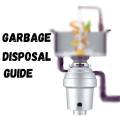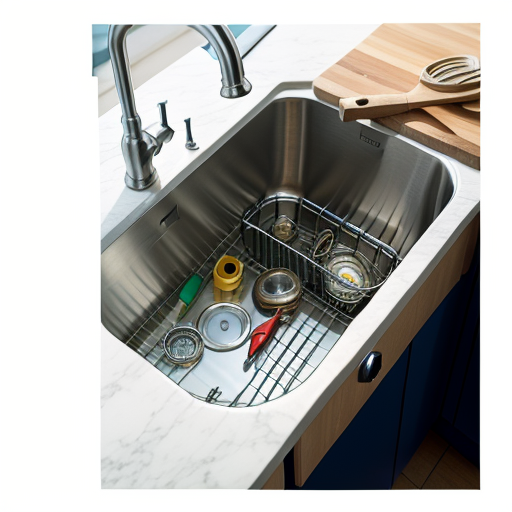The rhythmic whir of your garbage disposal – a symphony to every clean-conscious cook. But that harmonious sound can quickly turn into a frustrating sputter and groan when a clog throws a wrench (or, perhaps more fittingly, a potato peel) into the works. Fear not, fellow food waste fighter! This guide equips you with the knowledge to tackle common garbage disposal jams and get your kitchen hero back in action.
Before diving into solutions, let’s acknowledge the frustration. A clogged disposal disrupts your kitchen routine and leaves you with a sink full of…well, let’s not dwell on the details. But fret no more! The answer to a jammed disposal might be closer than you think. We’ll explore safe and effective DIY methods to diagnose the clog and get your disposal chomping food scraps with gusto once again.
Common Disposal Blockages
A clogged garbage disposal can be a real head-scratcher. What exactly is causing that sputter and groan? Here, we’ll unveil the usual suspects behind these blockages:
- The Usual Suspects: Food Scraps & Grease Buildup: Let’s face it, garbage disposals are designed to grind food waste. However, excessive amounts or improper grinding materials can lead to jams. Here’s a breakdown of the common food culprits:
- Fibrous foods: Celery stalks, corn cobs, and banana peels can tangle around the blades and cause blockages.
- Eggshells: Eggshells don’t grind well and can accumulate, creating a barrier that prevents proper disposal of other food scraps.
- Coffee Grounds: Large quantities of coffee grounds can form a thick paste that contributes to clogs.
- Grease and Oil: These solidify and coat the blades, hindering grinding performance and potentially leading to buildup that traps food scraps.
- The Unforeseen Invaders: Sometimes, unexpected objects find their way down the drain, causing major blockages. These surprise guests can include:
- Utensils: Forks, spoons, and even stray measuring cups can accidentally fall into the disposal and jam the blades.
- Toys: Small toys, especially those belonging to little ones, can become lodged in the disposal.
- Bones and Fruit Pits: These hard objects are not meant for grinding and can cause significant blockages.
- The Overzealous Grinder: Even the mightiest garbage disposal has its limits. Trying to grind too much at once can overload the motor, causing it to shut down as a safety measure. This can also lead to a jam if the food scraps don’t have enough water to grind effectively.
Safety First: Unplug Before You Plunge!
Before we delve into the exciting world of unclogging your disposal, safety is paramount. Remember, garbage disposals have sharp blades and electrical components. To prevent any accidental injuries or shocks, always unplug the garbage disposal from the power outlet before attempting any physical work on it.
Now that safety is assured, let’s explore the various techniques you can use to free your disposal from its jam.
Unjamming Techniques: Your DIY Arsenal
Here’s your toolkit for conquering common garbage disposal clogs. Remember, always consult your disposal’s manual for specific instructions before attempting any of these methods:
- The Pliers Pinch: For minor clogs caused by visible objects like utensils or food scraps, you might be able to remove the culprit manually. With the disposal unplugged! Use a long pair of pliers to carefully reach into the disposal and remove the obstruction. Be sure to shine a flashlight** for better visibility and avoid reaching too far to prevent injury.
- The Ice Cube Trick: This nifty hack utilizes the power of ice to potentially dislodge minor clogs and freshen up your disposal. With the disposal unplugged, fill a tray with ice cubes and toss them down the drain. Run cold water while the ice cubes grind. The ice helps sharpen the blades and dislodge any small food particles stuck within the unit.
- The Allen Wrench Approach (for applicable models): Some garbage disposal models come with a special Allen wrench for manual operation. If yours has one, consult the manual for proper use. With the disposal unplugged, insert the wrench into the designated slot and carefully turn the wrench in the direction indicated by the manual to break up the jam.
- Baking Soda and Vinegar (for stubborn clogs): For more stubborn blockages, this classic cleaning combo can work wonders. With the disposal unplugged, pour a half cup of baking soda down the drain, followed by a cup of white vinegar. The mixture will fizz as it reacts, helping to break down grease and food particles. Let it sit for 15 minutes, then flush with hot water and run the disposal for a short period to see if the clog is cleared.
Calling in the Plumbing Cavalry
You’ve valiantly followed the troubleshooting steps, wrestled with pliers, and unleashed the fizzing power of baking soda and vinegar, but your garbage disposal remains stubbornly clogged. Don’t despair! There’s no shame in calling in a licensed plumber to diagnose and address the issue. Here are some signs that professional help is the wisest course of action:
- The Leaking Labyrinth: A leaking garbage disposal indicates a more serious issue that requires a plumber’s expertise. Water leaks can damage your cabinets and surrounding areas if left unattended. A plumber can identify the source of the leak and recommend the appropriate repair or replacement.
- Sounds of Fury: Unusual noises like grinding, screeching, or knocking coming from your disposal can signify internal damage or loose components. A plumber can diagnose the source of the noise and recommend repairs or replacement. For example, a grinding noise might indicate dull blades that need sharpening, while a knocking sound could be a sign of a damaged impeller (the part that spins and grinds food waste).
- Clog Calamity (Part Two): If you’ve attempted the manual removal methods, the ice cube trick, and the baking soda and vinegar solution, and the clog persists, it’s best to call in a professional. Deep clogs or those lodged beyond reach might require specialized tools and techniques to safely remove. A plumber will have the expertise and equipment to tackle even the most stubborn blockages.
People Also Ask: Keeping Your Disposal Running Smoothly
Conquering a clogged garbage disposal is a rewarding experience, but even better is preventing the problem altogether! This PAA section equips you with the knowledge to maintain your disposal and keep it running smoothly for years to come.
1. Can I use chemicals to unclog a garbage disposal? (Why they are not recommended)
Harsh chemical drain cleaners are not recommended for garbage disposals. These chemicals can damage the disposal blades and gaskets over time, leading to leaks and malfunctions. The recommended cleaning methods mentioned above are safe and effective for maintaining your disposal. In fact, chemical cleaners can actually worsen a clog by solidifying organic material.
2. How do I prevent garbage disposal jams? (Preventative maintenance tips)
A little prevention goes a long way in stopping clogs before they start. Here are some habits to adopt for a happy and healthy disposal:
- Grind the right things: Stick to approved food scraps like vegetable peels, fruit cores, and cooked meat scraps (after removing bones). Avoid fibrous materials, eggshells, coffee grounds, and grease as these can contribute to clogs.
- Run cold water while grinding: This flushes food scraps down the drain and prevents them from accumulating in the disposal. Turn on the cold water before you activate the disposal, and keep it running for a few seconds after you’re finished grinding.
- Periodic cleaning: Once a week or so, grind a tray of ice cubes with cold water running. This sharpens the blades and dislodges any small food particles. You can also use citrus peels for a natural deodorizer.
3. What garbage disposal parts are most prone to clogging? (Impellers and drain lines)
The two main parts of a garbage disposal susceptible to clogs are:
- Impeller: This is the spinning component with blades that grinds food waste. Food scraps, grease, and foreign objects can get lodged around the impeller, preventing it from functioning properly.
- Drain lines: The drain lines carry the ground-up food waste away from the disposal and out to the main sewer line. Grease buildup and food particles can accumulate in the drain lines, causing blockages that prevent proper drainage.
4. What are the best tools to have on hand for garbage disposal maintenance? (Pliers, allen wrench, flashlight)
Having a few handy tools can help you with basic maintenance and troubleshooting of your garbage disposal:
- Pliers: Useful for removing visible clogs caused by utensils or other objects that might be lodged in the disposal.
- Allen wrench (for applicable models): Some garbage disposal models come with a special Allen wrench for manual operation in case the disposal jams. Consult your owner’s manual for proper use.
- Flashlight: Provides better visibility when looking inside the disposal for clogs or when using the pliers to remove objects.
By following these simple tips and maintaining a healthy preventative routine, you can keep your garbage disposal functioning optimally and avoid frustrating clogs down the line.
Conclusion:
There you have it, warriors of the kitchen! This guide has equipped you with the knowledge to not only diagnose common garbage disposal woes but also potentially vanquish them yourself with the power of DIY troubleshooting.
From identifying power supply issues to conquering minor clogs with the ice cube trick, you’re now armed with the skills to tackle basic disposal dilemmas and keep your kitchen sink hero running smoothly.
Remember, even the most valiant warriors know when to call for backup. If your disposal woes persist or involve complex clogs, leaks, or unusual noises, don’t hesitate to call in a licensed plumber. Their expertise can ensure a lasting fix and prevent further damage to your plumbing system.
So, the next time your garbage disposal throws a silent tantrum, approach it with confidence. Armed with this guide and a healthy dose of DIY spirit, you might just be surprised at what you can achieve. But remember, there’s no shame in calling in the cavalry – a qualified plumber is always there to ensure a happy ending for your kitchen battles.

